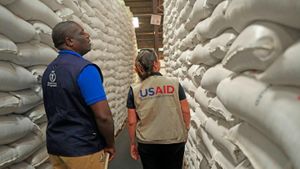On Wednesday evening, the skies above Washington, D.C. witnessed the deadliest aviation disaster to occur on U.S. soil in nearly 25 years. A tragic midair collision between American Airlines Flight 5342 and a U.S. Army Black Hawk helicopter resulted in the loss of 67 lives, marking this incident as the most catastrophic air disaster since the 2009 Crash near Buffalo, New York.
The collision occurred late Wednesday at Ronald Reagan Washington National Airport, wherein the Army chopper crashed, igniting fires and causing both aircraft to plunge dramatically over the Potomac River. The aftermath involves over 40 bodies recovered from the frigid waters, with 28 victims positively identified by early Friday, according to officials.
Reportedly, the Black Hawk was conducting necessary training for military pilots—an annual routine deemed standard for preparedness during emergencies. The tragic irony is underscored by the fact this was happening against the backdrop of Congress’s years-long debates over air traffic safety amid growing traffic congestion at the airport.
National Transportation Safety Board (NTSB) member Todd INman informed the press about the initial investigation stages, noting interviews with air traffic controllers and the recovery of flight data recorders from both aircraft. Investigators are prioritizing these findings to determine the exact circumstances leading to the collision.
“Air traffic control interviews are absolutely key to this investigation,” stated NTSB's Todd INman, emphasizing the need for thorough examination of procedural adherence by controllers working during the incident. Investigators confirmed at least one controller was on duty, managing air traffic, but detailed staffing and procedural evaluations remain part of the inquiry.
Meanwhile, the efficiency of the training flights, particularly near high-traffic airspace, is receiving scrutiny. It’s noted publicly available data could suggest the Black Hawk was flying at excessive altitude since restrictions prohibit helicopters from operating above 200 feet near Reagan National. It has raised concerns around equipment malfunction or potential lapses during pilot training.
“Flying aircraft is not like riding a bicycle, you need continuous practice to keep your skills honed,” emphasized Tim Loranger, aviation attorney and former military aircraft mechanic. The evaluation of whether the pilots had been logging sufficient hours, especially operating at altitudes or conditions similar to those present Wednesday, will be key to identifying any deficiencies.
Some of the identified victims include Staff Sgt. Ryan Austin O'Hara, 28, and Chief Warrant Officer 2 Andrew Loyd Eaves, 39, both from the Army unit tasked with transporting government officials. While O'Hara's remains were believed to be recovered following the crash, the body of the third crew member remains unidentified at the family's request.
Civilians aboard the passenger jet included prominent figures—a pilot engaged to be married soon, college students returning from family functions, and even two Chinese nationals serving as cultural representatives. Their families are now receiving testimonies from investigators involved, and the NTSB continues to provide assistance.
Efforts to recover bodies and debris from the Potomac are complicated, and NTSB officials have hinted at potential delays due to adverse conditions. Meanwhile, the airspace above DC has been heavily restricted for most helicopters, with exceptions only for urgent medical or defense calls, following directives from the FAA aimed to bolster safety protocols.
The Federal Aviation Administration announced plans to re-assess airspace management regulations after the investigation. “This will help us develop effective measures to prevent such tragedies moving forward,” said Transportation Secretary Sean Duffy.
Heightened tensions around air traffic management have long been present, particularly expressed by experts like Ross Aimer, who indicated the airspace around D.C. has reached dangerous levels of congestion. He remarked, “This was a disaster waiting to happen.” With the airport originally built for 15 million passengers, it now services approximately 25 million annually, showcasing the inadequacies of existing oversight.
Questions persist, with speculation from authorities, including President Trump, attributing the helicopter’s excessive altitude to pilot inaccuracies. “It was far above the 200-foot limit. That’s not complicated,” Trump posted on Truth Social. His comments have sparked discourse around pilot accountability and operational safety protocols.
Following these sentiments, discussions around reevaluations of military training corridors appear imminent. Existing military operations, which are routinely conducted within close proximity to the busy D.C. airspace, are under aggressive examination. Future renditions of air traffic strategy, especially with military aircraft, must factor response time alongside the necessity of civilian safety.
Locals and families continue to grapple with the weight of loss. The city lights dimmed, and flags are lowered, honoring lives lost. Community support efforts are underway, extending solace to all impacted citizens.
This tragic incident raises significant concerns about military operations entwined with commercial air traffic, and experts insist continued assessments of air corridors and safety regulations are not merely improvements, but necessary adaptations to prevent future catastrophes.
The full NTSB report is anticipated to be released within the month as investigators dutifully and carefully dissect the details leading to this heart-wrenching disaster.



